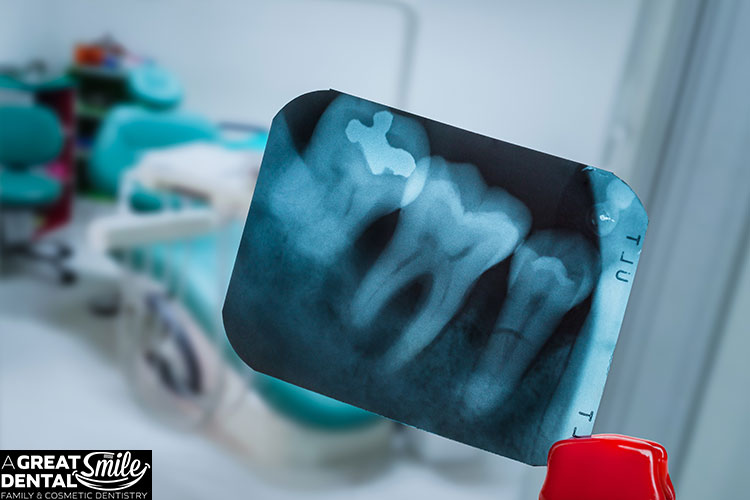Introduction
A Vertical Root Fracture (VRF) is a type of dental fracture that occurs along the length of a tooth’s root, typically extending from the root canal to the exterior of the tooth. Understanding vertical root fractures is crucial for maintaining dental health, as they can lead to severe complications if left untreated. This comprehensive guide aims to delve into the intricacies of VRF, including its causes, symptoms, diagnosis, and treatment options, with a special focus on the roles of dental implants and crowns in managing this condition.
VRFs are significant in dentistry due to their complex nature and the challenges they pose in diagnosis and treatment. Unlike other dental issues, VRFs often present subtle symptoms that may be overlooked until the condition progresses to an advanced stage. This guide seeks to equip you with in-depth knowledge about VRF, from identifying early signs to understanding the latest advancements in treatment, including the pivotal role of dental implants and crowns. Whether you are a dental professional, a patient experiencing symptoms, or simply someone interested in dental health, this guide will provide valuable insights into managing and preventing vertical root fractures.
Understanding Vertical Root Fractures
Causes of Vertical Root Fractures
- Dental Trauma: Sudden impacts or injuries to the mouth can cause immediate fractures or weaken the tooth structure, leading to fractures over time.
- Root Canal Therapy: While essential for saving a diseased or damaged tooth, the process can sometimes weaken the tooth, making it more susceptible to fractures.
- Excessive Occlusal Forces: Habits like bruxism (teeth grinding) or clenching can exert excessive pressure on teeth, particularly on those that have undergone extensive dental treatments, leading to VRF.
- Pre-existing Cracks or Fractures: Minor cracks unnoticed or untreated can develop into vertical root fractures.
Signs and Symptoms
- Pain Upon Biting or Chewing: A clear sign that something is wrong, often the first symptom noticed by patients.
- Sensitivity to Hot or Cold: Experiencing sharp pain or discomfort with temperature changes can indicate a VRF.
- Swelling or Tenderness of the Gum: Inflammation around a specific area may suggest a fracture beneath the surface.
- Mobility of the Tooth: Any looseness or movement in a tooth could be a sign of underlying issues, including VRF.
Diagnosis Techniques
- Clinical Examination: A thorough inspection by a dental professional can reveal signs of VRF.
- Dental X-rays: Standard X-rays may show some fractures, but not all VRFs are visible with this method.
- Periodontal Probing: Measuring the depth of gum pockets can sometimes indicate a fracture.
- Cone Beam Computed Tomography (CBCT): This advanced imaging technique provides a three-dimensional view of the tooth and is more effective in identifying VRF.

Treatment Options and Management
Extraction
In cases where the VRF is severe and the tooth cannot be saved, extraction becomes necessary. This procedure involves removing the affected tooth to prevent further damage to the surrounding tissues and to alleviate pain.
Endodontic Therapy (Root Canal Treatment)
For fractures that are detected early and are not too extensive, root canal treatment may be an option by an Endodontist. This procedure involves removing the infected or damaged tissue inside the tooth, cleaning and disinfecting the root canal, and then filling and sealing it to prevent further infection.
Apical Surgery
Apical surgery, or apicoectomy, may be considered when a VRF is located near the tip of the root. This procedure involves removing the tip of the root along with the fractured portion and sealing the end of the root canal to prevent infection.
Splinting
If the tooth is loose but salvageable, it may be stabilized by splinting it to adjacent teeth. This method is typically a temporary solution to provide stability while the surrounding tissues heal.
Periodontal Therapy
In cases where a VRF has led to gum disease or infection around the tooth, periodontal therapy may be necessary. This can include deep cleaning (scaling and root planing) to remove plaque and tartar from below the gum line and antibiotics to treat infection.
The Role of Dental Implants and Crowns in VRF
Dental Implants as a Solution
Dental implants offer a permanent solution for replacing a tooth lost to VRF. They consist of a titanium post that is surgically implanted into the jawbone, acting as a root for the artificial tooth (crown) that is mounted on top. The process involves several steps:
- Extraction and Healing: The affected tooth is removed, and the area is allowed to heal.
- Implant Placement: The titanium post is inserted into the jawbone.
- Osseointegration: The implant fuses with the bone over several months.
- Abutment and Crown Placement: Once the implant is secure, an abutment is attached, followed by the artificial tooth.
Dental Crowns for Prevention and Management
Dental crowns can also play a crucial role in both preventing and managing VRF. They are custom-made caps placed over a tooth to restore its shape, size, strength, and appearance. In the context of VRF:
- Prevention: Crowns can protect weakened teeth from fractures by distributing biting forces more evenly.
- Management: After a root canal treatment for a minor VRF, a crown can provide additional support and protection for the tooth.
Preventing Vertical Root Fractures
Prevention is key to avoiding the complications associated with vertical root fractures (VRF). Implementing certain practices can significantly reduce the risk of developing VRF:
- Avoidance of Excessive Force: Be mindful of the force applied to teeth during chewing and avoid using teeth as tools to open or break objects.
- Proper Dental Hygiene: Regular brushing and flossing maintain the strength of teeth and gums, reducing the risk of fractures.
- Use of Mouthguards: For those involved in sports or who grind their teeth at night, wearing a mouthguard can protect teeth from trauma and excessive pressure.
- Regular Dental Check-ups: Routine visits to the dentist for check-ups and cleanings can help identify and address any potential issues before they develop into serious problems.
Advances in Dental Care for VRF
The field of dentistry is constantly evolving, with new technologies and techniques improving the detection, treatment, and prevention of conditions like vertical root fractures. Some notable advancements include:
- Improved Diagnostic Tools: Enhanced imaging techniques, such as digital X-rays and Cone Beam Computed Tomography (CBCT), offer more detailed views of the teeth and supporting structures, aiding in the early detection of VRF.
- Advanced Materials for Dental Restorations: The development of stronger, more durable materials for crowns and fillings helps protect and preserve tooth structure.
- Minimally Invasive Treatment Options: Techniques like laser dentistry and air abrasion allow for more precise and less invasive treatments, reducing the risk of tooth fracture during dental procedures.
Real-Life Case Studies
Case studies highlight the effectiveness of modern dental treatments for vertical root fractures and underscore the importance of timely intervention. For instance:
- Case Study 1: A patient presented with a VRF in a molar previously treated with a root canal. The tooth was extracted, and a dental implant was placed. The patient reported satisfaction with the implant, noting improved functionality and appearance.
- Case Study 2: Another patient suffered a VRF in a front tooth. After extraction, the tooth was replaced with a dental implant and crown, restoring the patient’s smile and confidence.
Conclusion
Vertical root fractures pose a significant challenge in dentistry, requiring prompt and effective management to prevent further complications. Understanding the causes, symptoms, and treatment options for VRF is essential for maintaining oral health. Advances in dental technology and treatment methods continue to improve the prognosis for patients with VRF, offering more effective solutions and better outcomes. The role of dental implants and crowns in treating and preventing VRF cannot be overstated, providing durable and aesthetically pleasing results for those affected.
Call to Action
If you suspect you may have a vertical root fracture or are experiencing symptoms associated with this condition, do not hesitate to seek professional dental care. Early detection and treatment are crucial for the best possible outcome. Remember, preventive measures and regular dental check-ups can go a long way in maintaining your dental health and preventing conditions like VRF.

